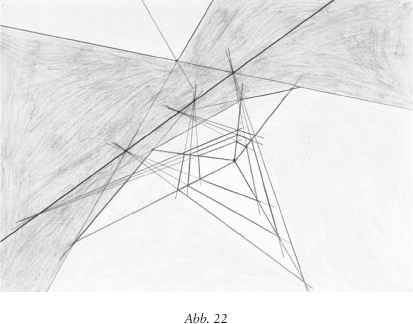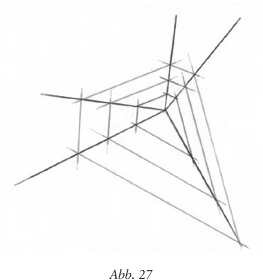Raum und Metamorphose
Teil 2: Die lebendige Raumauffassung in der projektiven Geometrie
Export Article Citation as
- Plain text
- BibTeX
- RIS format
- Download price : € 6.00
Abstract:
The vanishing points and the vanishing line of perspective constructions can be interpreted as images of infinite elements. Projectivity is a generalization of the principles of perspectivity. Thus all points of a line can be clearly assigned to the points of another line. With the help of this assignment conic sections can be constructed. Curved forms come into existence out of the fundamental elements point, line and plane. This process corresponds to the second dimension of the space which has been outlined in the first part of this article (Elemente d. Naturwissenschaft Nr. 105, S. 5 ff.) as three distinct levels of knowledge. With the help of a circle or other conic sections forms can be mirrored that are polar to each other. This can lead to the concept of counterspace in its relation to space. As with space, there are also three dimensions of counterspace that can be understood as three levels of knowledge. The relation of form and polar form reveals itself from the point of entering the third dimension or level of knowledge. Seen from this twofold path leading to three levels of knowledge, the idea of space represents as an inverted mirror the path in the spiritual world from human death to a new life.













